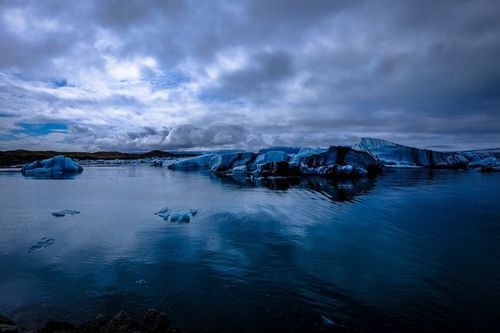June 3, 2018
Scientists Succeed in Quantifying Arctic Ocean CO2 Uptake for the First Time
Keywords: Climate Change

Image by ujasnpandya Some Rights Reserved.
The Japan Agency for Marine Earth Science and Technology (JAMSTEC) and the Meteorological Research Institute of the Japan Meteorological Agency announced on March 22, 2018 that they have succeeded in quantifying the CO2 uptake by the Arctic Ocean. Their researchers estimate CO2 uptake in the Arctic Ocean at 10% of the total for the world's oceans, even though it accounts for only 3% of the world's total ocean surface area. These findings are expected to contribute to calculating the global carbon budget and better understanding ocean acidification.
JAMTEC in collaboration with an international team of scientists including the Meteorological Research Institute of the Japan Meteorological Agency, the University of Bergen, and the U.S. National Oceanic and Atmospheric Administration, created a distribution map containing 216 months (1997 to 2014) worth of air-sea CO2 exchange in the ocean north of latitude 60 degrees North. The result revealed that the annual Arctic Ocean CO2 uptake is 180 plus or minus 130 TgC (1 TgC = 1012 g of carbon = 1 million tons of carbon).
Generally, as the water temperature rises, CO2 uptake decreases. It has been found that long-term changes in overall CO2 uptake in the Arctic sea are diminishing, as the effect of rising water temperatures decreasing uptake is being offset by increased uptake due to decreasing sea ice.
High uptake is seen in the Greenland Sea, Norwegian Sea and Barents Sea on the Atlantic Ocean side and the Chukchi Sea in the Pacific Ocean side where there are strong winds and low sea-ice concentrations. During seasonal changes, high uptake is seen in winter in the Greenland Sea, Norwegian Sea and Barents Sea when there are strong winds.
In the Chukchi Sea, high uptake is seen during summer when seawater temperature is high with little sea ice and autumn when winds gradually become stronger. In the Arctic Ocean, uptake is at its peak in October when there is little sea ice and winds start getting stronger.
Related
"JFS Newsletter"
- Shaping Japan's Energy toward 2050 Participating in the Round Table for Studying Energy Situations
- Implementation of the Paris Climate Agreement: A Report on Japan's Round Table for Studying Energy Situations
- Auto Sales Industry Cooperates to Tackle Social Responsibility: Examples from Yamagata, Japan
- Yokohama FC: Leader in Eco-Activities through Football-Related Carbon Offset
Related
"Popular Articles"
- Large Ozone Hole Observed Again in 2011
- Japan's Pro Baseball Teams Start Eco-Project to Cut Energy Use by 6%
- Manufacturer Saving Energy by Growing Vertical Gardens on Factory Walls
- Sony Draws Up 'Road to Zero' Plan for Zero Environmental Footprint
- Tokyo Announces Innovative 10-Year Strategy against Climate Change


